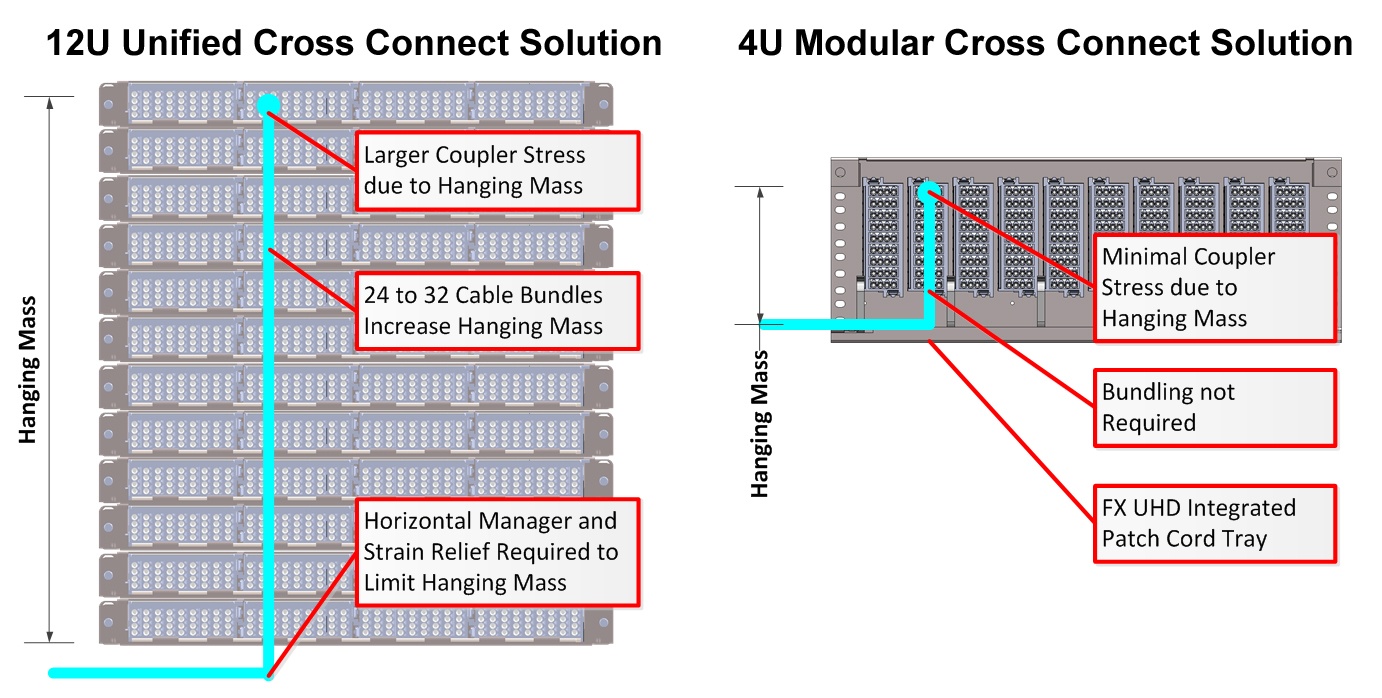High-Density SAN Cross Connects: Looks Aren’t Everything!
One of the more popular switching platforms for storage area network (SAN) backbones is the Brocade DCX Series switch that features 8 vertical slots for 64-port blades, providing up to 512 mini-LC duplex ports operating simultaneously at 8 gigabit Fibre Channel.
While these switches are ideal for connecting SAN backbones in larger enterprise networks, there are some considerations when it comes to patch cord and cable management options for these high port count fiber switches.
Revisiting Hydra vs. Patch Cords
When it comes to the 512-port Brocade switch, there are some advantages and disadvantages to remember when choosing between traditional mini-LC duplex patch cords and MPO-LC hydra cable assemblies.
Hydras allow for connecting directly from MPO patch panels systems to the Brocade, removing an LC connection point from the channel for reduced loss. Hydras also require less cabling management, less space and fewer patch panel connections—and many prefer them primarily for their looks.
However, if one of the mini-LC duplex connectors fails or gets damage, the entire hydra assembly must be replaced, causing down-time on the other ports during maintenance.
On the other hand, when a single mini-LC duplex patch cords fails, it can easily be replaced with only one switch port experiencing downtime. Plus, with low insertion loss values like 0.15 dB offered with Belden low loss OM4 LC duplex patch cords, the loss savings achieved with hydras is really a nonissue.
12U Unified vs. 4U Modular Cross Connects
Another popular solution for cable management of high-density SAN switches is the use of 12U vertical unified cross connects that are specifically designed to replicate the port density of the Brocade.
While some think that the spacing between ports makes for easier cable management, the primary reason for these large 12U cross connects is for looks. Let’s face it, it looks really nice in the rack when the patch panel ports and switch ports are identical. But once again, looks aren’t everything.
12U is a lot of height for the hanging mass of a bundle of patch cords, and bundling in these applications is necessary due to the longer cord lengths. However, tightly bundled cords can place a lot of stress on the shortest cord in the bundle. That stress on the coupler can cause increased insertion loss.
In fact, the hanging mass on a 12U vertical cross connect can potentially exceed TIA standards for connector side-pull limit (cable retention: FOTP-6)), which specifies the tensile load for cables terminated to connectors.
The good news is that when using a Belden FiberExpress UHD 4U Fixed Shelf for a cross connect, the fixed patch cord tray limits hanging mass. And with its shorter height and integrated tray to provide support, there is no need to bundle and mass is evenly distributed across all cords.
I guess the question you have to ask yourself is whether you want to look really good at the expense of risking network performance. The answer to that question is an easy one.
